Hyundai Tucson vs Jaguar E-Pace – Differences & prices compared
Compare performance, boot space, consumption and price in one view.
Find out now: which car is the better choice for you – Hyundai Tucson or Jaguar E-Pace?
The Hyundai Tucson (SUV) comes with a Diesel MHEV, Petrol MHEV, Petrol, Full Hybrid or Plugin Hybrid engine and Automatic or Manuel transmission. In comparison, the Jaguar E-Pace (SUV) features a Plugin Hybrid, Diesel MHEV or Petrol MHEV engine with Automatic transmission.
When it comes to boot capacity, the Hyundai Tucson offers 620 L, while the Jaguar E-Pace provides 494 L – depending on how much space you need. If you’re looking for more power, decide whether the 252 HP of the Hyundai Tucson or the 269 HP of the Jaguar E-Pace suits your needs better.
In terms of consumption, the values are 1 L per 100 km for the Hyundai Tucson, and 1.40 L for the Jaguar E-Pace.
Price-wise, the Hyundai Tucson starts at 30600 £, while the Jaguar E-Pace is available from 32400 £. Compare all the details and find out which model fits your lifestyle best!
In the bustling segment of compact SUVs, the Hyundai Tucson and Jaguar E-Pace offer distinct experiences catering to different preferences. The Tucson stands out with its value-driven proposition, offering a generous suite of features, comfortable ride, and impressive fuel efficiency. On the other hand, the E-Pace impresses with its upscale design and dynamic performance, appealing to those who prioritize luxury and sporty driving characteristics.
Hyundai Tucson
The Hyundai Tucson is a standout choice in the compact SUV segment, offering a perfect blend of style, comfort, and practicality. Its modern design is complemented by a spacious interior that provides ample room for passengers and luggage alike. With advanced technology and safety features, the Tucson ensures a smooth and enjoyable driving experience.
details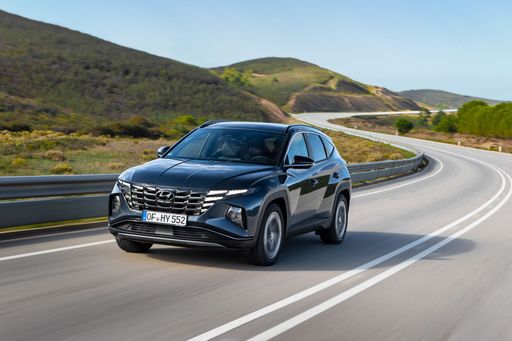 @ hyundai.news
@ hyundai.news
 @ hyundai.news
@ hyundai.news
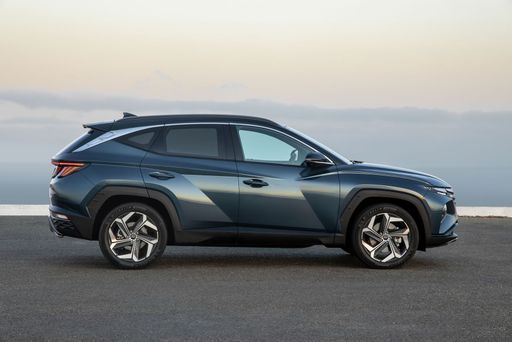 @ hyundai.news
@ hyundai.news
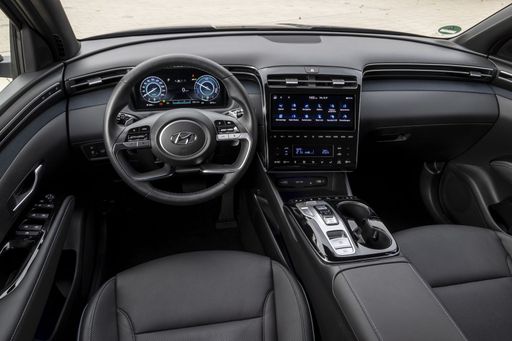 @ hyundai.news
@ hyundai.news
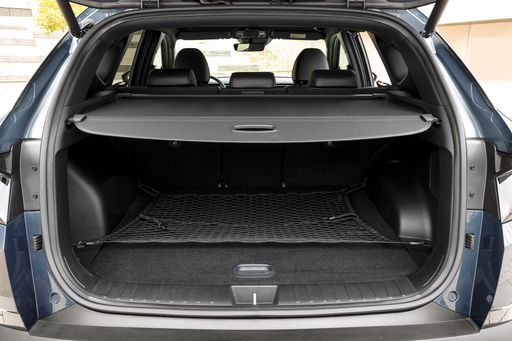 @ hyundai.news
@ hyundai.news
Jaguar E-Pace
The Jaguar E-Pace is a compact SUV that combines the brand's signature luxury with a dynamic driving experience. Its sleek design features graceful lines and an assertive stance, making it a standout on any road. Inside, the E-Pace boasts a meticulously crafted interior with high-quality materials and advanced technology, providing both comfort and connectivity for drivers and passengers alike.
details @ media.jaguar.com
@ media.jaguar.com
 @ media.jaguar.com
@ media.jaguar.com
 @ media.jaguar.com
@ media.jaguar.com
 @ media.jaguar.com
@ media.jaguar.com
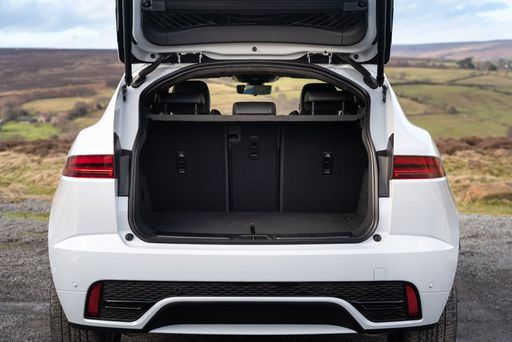 @ media.jaguar.com
@ media.jaguar.com
Hyundai Tucson vs. Jaguar E-Pace: A Comprehensive Comparison
The 2024 automotive season brings a striking comparison between two popular SUVs: the Hyundai Tucson and the Jaguar E-Pace. These vehicles promise innovation, stylish design, and practical performance. In this feature, we delve into their technical aspects, powertrains, and what makes them stand out in the ever-evolving SUV market.
Performance and Engine Options
The Hyundai Tucson offers a broad spectrum of engine types, with options ranging from Diesel MHEV, Petrol MHEV, Petrol, Full Hybrid, to a PHEV. The power output varies from 136 to 252 HP, fueled by engines with a capacity of 1598 cm³. The Tucson's power curves adapt to different driver needs with the availability of both automatic and manual transmissions.
On the other hand, the Jaguar E-Pace provides a dynamic ride with its Plugin Hybrid, Diesel MHEV, and Petrol MHEV engines. Its powerful PHEV variant pushes out 269 HP, backed by a robust 540 Nm of torque. Unlike its competitor, the E-Pace is available exclusively with an automatic transmission, ensuring a smooth driving experience.
Efficiency and Environmental Considerations
Fuel efficiency is a cornerstone for both SUVs. The Tucson boasts a consumption range between 1.2 and 6.8 L/100km, highlighting its eco-friendly PHEV variant with an impressive CO2 emission as low as 22 g/km. Additionally, the PHEV offers an electric range of up to 70 km.
The E-Pace challenges the Tucson with a competitive fuel consumption starting at 1.4 L/100km for the PHEV, with CO2 emissions of 33 g/km. Its electric range is slightly behind the Tucson's, at 69 km, but still offers a solid performance for city commutes.
Interior and Practicality
Inside, both SUVs accommodate five passengers, emphasizing comfort and functionality. However, the Tucson edges forward with trunk capacities ranging from 546 to 620 liters, whereas the E-Pace offers a singular trunk capacity of 494 liters. This variation might sway buyers prioritizing cargo space.
The curb weight is another critical factor, with the Tucson's weight starting at 1520 kg, culminating at 1889 kg for heavier trims, versus the E-Pace's broader range from 1783 kg to 2173 kg. It's important to note that a lighter vehicle not only can contribute to better fuel efficiency but might also sport a more agile handling.
Dimensions and Exterior Design
Design and dimension play significant roles in a vehicle's road presence. The Tucson's length stretches between 4510 to 4520 mm, with a width of 1865 mm and a height of 1650 mm, encapsulating its refined yet versatile architecture.
Meanwhile, the E-Pace, slightly shorter at 4395 mm in length but wider at 1984 mm, presents a bold stance paired with a slightly lower height of 1648 mm. This design lends a sporty aesthetic appeal complemented by Jaguar’s signature styling cues.
Conclusion
Choosing between the Hyundai Tucson and the Jaguar E-Pace depends on personal preference and priorities. Prospective buyers must weigh factors such as powertrain versatility, fuel efficiency, interior space, and design. The Tucson presents itself as a multifaceted, practical choice with a wide engine offer and spacious interiors. Conversely, the E-Pace brandishes a touch of luxury and sportiness intrinsic to Jaguar's brand DNA.
Ultimately, both models encapsulate the essence of modern SUVs, promising to be excellent companions for urban commuting and adventures beyond.

|

|
|
|
|
Costs and Consumption |
|
|---|---|
|
Price
30600 - 46300 £
|
Price
32400 - 56100 £
|
|
Consumption L/100km
1 - 6.9 L
|
Consumption L/100km
1.4 - 8.2 L
|
|
Consumption kWh/100km
-
|
Consumption kWh/100km
-
|
|
Electric Range
64 - 70 km
|
Electric Range
69 km
|
|
Battery Capacity
-
|
Battery Capacity
11.50 kWh
|
|
co2
22 - 156 g/km
|
co2
33 - 185 g/km
|
|
Fuel tank capacity
42 - 54 L
|
Fuel tank capacity
56 - 67 L
|
Dimensions and Body |
|
|---|---|
|
Body Type
SUV
|
Body Type
SUV
|
|
Seats
5
|
Seats
5
|
|
Doors
5
|
Doors
5
|
|
Curb weight
1520 - 1889 kg
|
Curb weight
1783 - 2173 kg
|
|
Trunk capacity
546 - 620 L
|
Trunk capacity
494 L
|
|
Length
4510 - 4520 mm
|
Length
4395 mm
|
|
Width
1865 mm
|
Width
1984 mm
|
|
Height
1650 mm
|
Height
1648 mm
|
|
Payload
525 - 545 kg
|
Payload
497 - 554 kg
|
Engine and Performance |
|
|---|---|
|
Engine Type
Diesel MHEV, Petrol MHEV, Petrol, Full Hybrid, Plugin Hybrid
|
Engine Type
Plugin Hybrid, Diesel MHEV, Petrol MHEV
|
|
Transmission
Automatic, Manuel
|
Transmission
Automatic
|
|
Transmission Detail
Dual-Clutch Automatic, Manual Gearbox, Automatic Gearbox
|
Transmission Detail
Automatic Gearbox
|
|
Drive Type
Front-Wheel Drive, All-Wheel Drive
|
Drive Type
All-Wheel Drive, Front-Wheel Drive
|
|
Power HP
136 - 252 HP
|
Power HP
160 - 269 HP
|
|
Acceleration 0-100km/h
7.9 - 11.6 s
|
Acceleration 0-100km/h
7.3 - 10.5 s
|
|
Max Speed
180 - 194 km/h
|
Max Speed
190 - 211 km/h
|
|
Torque
265 - 367 Nm
|
Torque
260 - 540 Nm
|
|
Number of Cylinders
4
|
Number of Cylinders
3 - 4
|
|
Power kW
100 - 185 kW
|
Power kW
118 - 198 kW
|
|
Engine capacity
1598 cm3
|
Engine capacity
1498 - 1998 cm3
|
General |
|
|---|---|
|
Model Year
2024
|
Model Year
2024
|
|
CO2 Efficiency Class
E, F, D, B
|
CO2 Efficiency Class
B, G
|
|
Brand
Hyundai
|
Brand
Jaguar
|
Hyundai Tucson
Introducing the Hyundai Tucson: An SUV with Innovation at its Core
The Hyundai Tucson has long been synonymous with reliability, comfort, and exceptional value. With its 2024 model, this popular SUV has taken a bold leap forward by incorporating cutting-edge technology, efficient powertrains, and striking design. Let's delve into the technical details and innovations that make the Hyundai Tucson a standout in the crowded SUV market.
Dynamic Engine Options: Power Meets Efficiency
The Tucson offers a range of powertrains, ensuring there is a model perfect for every driver. Whether you're looking for the fuel efficiency of a mild-hybrid diesel or the power of a plug-in hybrid, the Tucson has you covered. The engine options include:
- Diesel Mild-Hybrid: Combining efficiency with robust performance.
- Benzin Mild-Hybrid: Offering a balance between economy and power.
- Voll-Hybrid: Delivering impressive power while maintaining low fuel consumption.
- Plug-in Hybrid: Offering electric-only driving capabilities with a range of up to 65 km.
These engines are paired with either a manual or automatic transmission, catering to different driving preferences.
Performance and Handling: Experience the Drive
The performance of the Hyundai Tucson is designed to impress, with power outputs ranging from 136 to 252 PS. The Tucson accelerates from 0-100 km/h in as little as 8.1 seconds, managed by precise transmission options such as the dual-clutch and traditional automatic gearboxes. With both front-wheel and all-wheel drive options, the Tucson assures stability and control in varied driving conditions.
Interior and Technology: Comfort Meets Cutting-Edge Innovation
The Tucson's interior is a haven of comfort and technology. With a length ranging up to 4520 mm and a spacious boot capacity of 620 litres, practicality is at the forefront. The intuitive infotainment system includes advanced connectivity features, while driver-assist technologies enhance safety and convenience on every journey.
The choice of luxurious trims and finishes, combined with ergonomic design, ensures that every drive is a pleasure, whether you're on a daily commute or an extended adventure.
Environmental Considerations: Efficiency and Sustainability
Hyundai has made notable strides in ensuring that the Tucson is as environmentally friendly as possible. Models with CO2 emissions as low as 27 g/km place it amongst the leaders in its class for eco-friendly driving. The array of hybrid options further complements Hyundai's commitment to sustainability, providing consumers with green alternatives without compromising performance.
Conclusion: The Hyundai Tucson Is More Than Just an SUV
The 2024 Hyundai Tucson is more than just a means of transport—it's a statement of modernity. It reflects Hyundai's dedication to innovation, efficiency, and comfort, all wrapped up in a stylish and versatile SUV. Whether you're tech-savvy, eco-conscious, or performance-oriented, the Tucson proves to be an ideal choice for forward-thinking drivers.
Jaguar E-Pace
The Jaguar E-Pace: A Modern Marvel in Compact SUV Design
The Jaguar E-Pace stands as a testament to the evolution of compact SUVs, merging classic design elements with cutting-edge technology. For those who appreciate the Jaguar pedigree, the E-Pace offers a blend of performance, style, and practicality that is hard to rival in its class.
Performance and Powertrain Options
Under the bonnet, the Jaguar E-Pace showcases a range of powertrains that cater to various driving preferences. Potential buyers can choose from plug-in hybrids, diesel mild-hybrids, and petrol mild-hybrids, each offering a unique balance of efficiency and power. The available engine options span from 160 to 269 PS, ensuring that drivers can select a model that suits their need for speed and fuel efficiency. Across the range, the acceleration from 0-100 km/h varies between a brisk 7.3 seconds to a more leisurely 10.5 seconds, showcasing versatility in design to meet different driving styles.
Innovative Hybrid Technologies
Jaguar's commitment to sustainability is evident in the E-Pace's hybrid offerings. The P270e Plug-in Hybrid variant combines performance with eco-friendly engineering, boasting a remarkable fuel consumption of just 1.4 L/100km and an all-electric range of up to 69 km. Meanwhile, the diesel mild-hybrids provide a balanced mix of efficiency and traditional power, catering to those who favour diesel engines' long-haul credibility with carbon emissions ranging from a low 33 g/km.
Dynamic Handling and Intelligent All-Wheel Drive
Driving dynamics are at the heart of the E-Pace's design. Jaguar's Intelligent All-Wheel Drive ensures optimal performance across various terrains, enhancing both stability and agility. For those seeking a dynamic driving experience, the R-Dynamic packages add a sporty flair, elevating both aesthetic and on-road performance.
Interior Sophistication and Practicality
The interior of the E-Pace reflects Jaguar's attention to detail, offering a meticulously crafted cabin that combines luxury with functionality. Supporting up to five passengers comfortably, it provides advanced infotainment systems and high-quality materials throughout. The 494-litre boot space ensures ample room for luggage, making it a practical choice for everyday use or weekend getaways.
A Focus on Safety and Driver Assistance
Safety remains at the forefront of the E-Pace's features, with an array of driver-assistance systems designed to enhance security and ease of driving. From adaptive cruise control to lane-keeping assist, the vehicle is equipped to handle the demands of modern motoring.
Conclusion: The Ideal Compact SUV
The Jaguar E-Pace is more than just a statement of style; it's a comprehensive package that addresses the needs of the modern driver. With a price range from €37,800 to €65,500, the E-Pace strikes a balance between luxury and practicality, making it a compelling choice in the competitive compact SUV market.
What drive types are available for the Hyundai Tucson?
The Hyundai Tucson is available as Front-Wheel Drive or All-Wheel Drive.
The prices and data displayed are estimates based on German list prices and may vary by country. This information is not legally binding.
